#Sakartvelo
Text



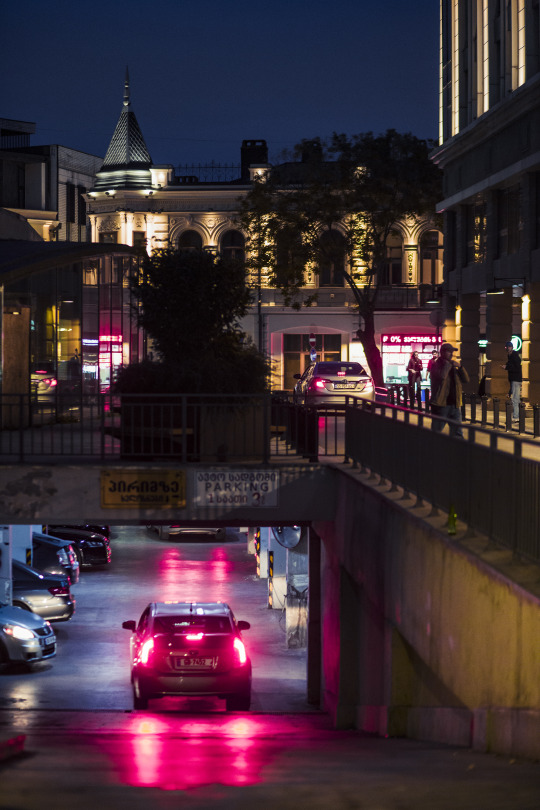


Tbilisi, Georgia - Autumn 2023
#glow#urban#night#life#city#sunset#neon#lights#original#photography#aesthetic#street#mood#photographers on tumblr#canon#tbilisi#sakartvelo
5K notes
·
View notes
Text


When the anti "LGBT propaganda" law passed in Russia, all of you were going insane and cared. Give Georgia the same energy. If you can have sympathy for our oppressors on the basis of them being queer, you should keep the same energy for us, if not more.
If this law passes, every Georgian queer person I know is so severely fucked, myself included. If you make jokes about "being illegal in several countries" you better fucking care about the countries you're apparently illegal in, or going to be illegal in.
Make sure to spread this around. This is important.
294 notes
·
View notes
Text
Gold Turtle Necklace from Ancient Colchis (modern-day Georgia/South Caucasus) c. 450 BCE: this necklace was crafted from 31 turtle-shaped pendants, each one made of g0ld

The necklace was discovered during excavations at an archaeological site in Vani, Georgia (the country, not the state). Ancient Vani once served as the religious and administrative center for the Kingdom of Colchis; as I've previously discussed, Colchis was also known as the homeland of the fabled Golden Fleece, and to much of the ancient world, the Colchians themselves were renowned for their skills in goldsmithing.
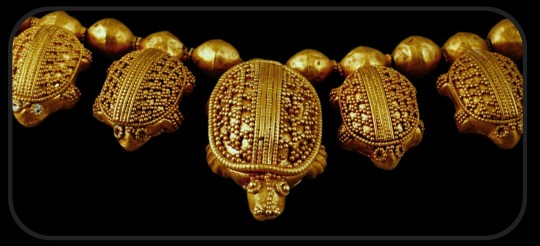
The turtle pendants on this necklace are all decorated with ornate filigree and granulation patterns. The eyes of the 30 smaller turtles were originally made with glass inlay, while the eyes of the largest turtle (seen in the center) were made from drops of gold.
As this article also notes (translated from Georgian):
[This necklace] is unique because of the zoomorphic depiction that it presents. Among the known examples of goldsmithing from antiquity, the depiction of a turtle is not attested anywhere other than the Vani necklace.
The local origin of the necklace is primarily indicated by the stylistic unity of the pendants with other examples of Colchian goldsmithing. It should be noted that the land turtle depicted on the pendants was widespread in Colchis.
The excavations at Vani have uncovered lots of other artifacts made by Colchian goldsmiths. These artifacts include temple ornaments, zoomorphic figures, pieces of jewelry, diadems, headdresses, hairpins, drinking vessels, and appliqués, among other things, and they've provided some really valuable insights into the unique goldsmithing traditions that existed among the peoples of Colchis -- and the myths that evolved as a result.
A few of the other golden artifacts from Vani:
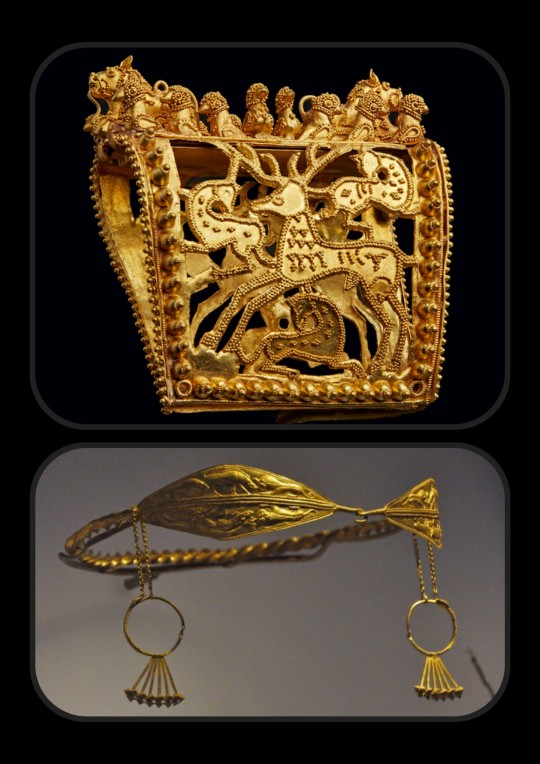
Top: headdress ornament featuring an openwork design, c. 350-300 BCE; the central panel of this piece depicts a stag and three other deer, while the frame is topped by two lions and several rows of birds; Bottom: a diadem with a set of temple ornaments, c. 400-350 BCE; all of the panels along the front of the diadem depict scenes of prey animals being hunted by lions
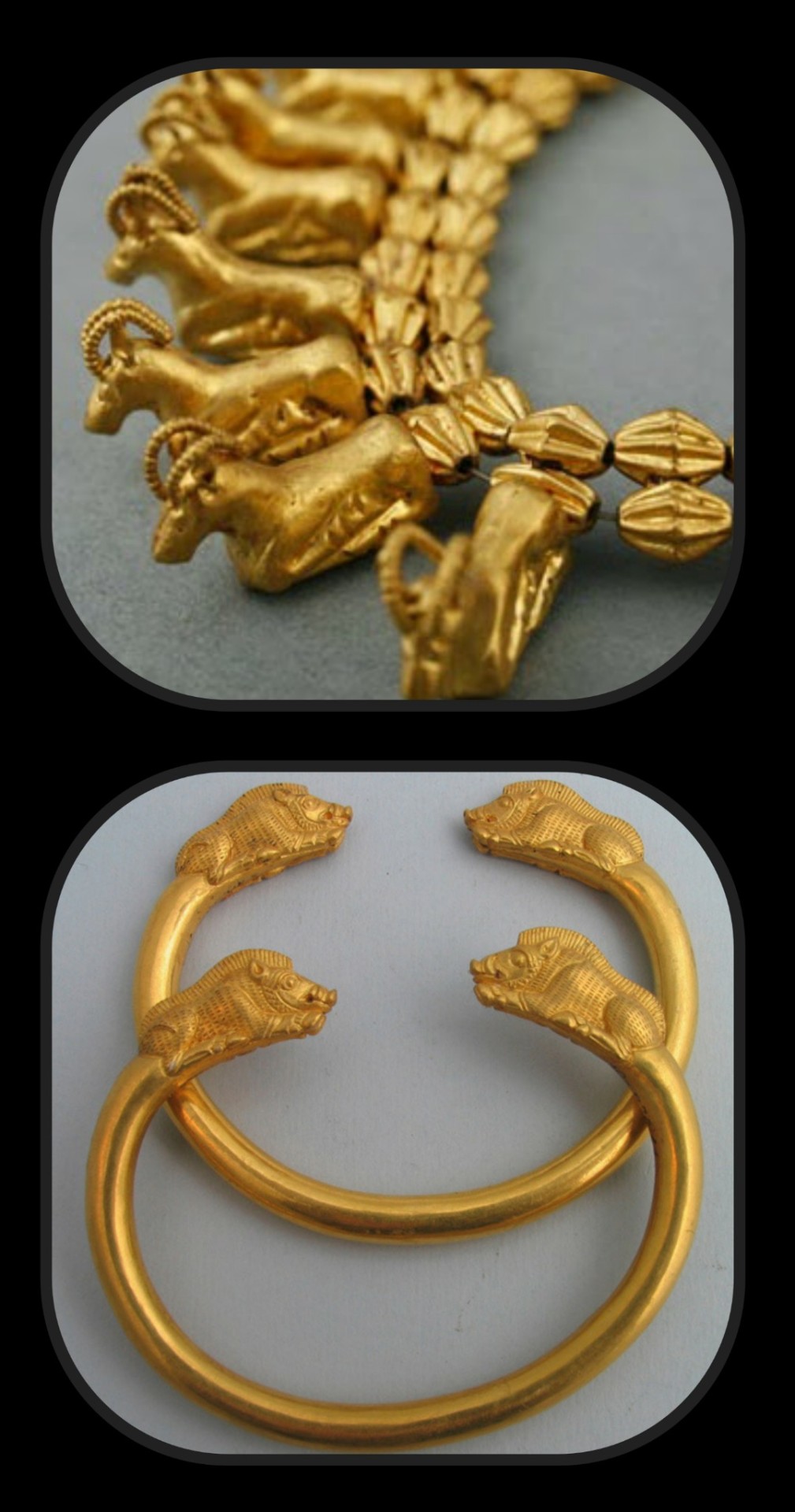
Top: necklace with a series of ram-shaped pendants, c. 400-350 BCE; each pendant was forged from two separate castings that were sealed together to form a complete shape, and the ears/horns were then soldered onto each piece; Bottom: set of bracelets with boar finials, c. 460-440 BCE

Golden appliqués depicting various animals, c. 400-300 BCE

Set of temple ornaments that depict two pairs of riders on horseback, c. 400-350 BCE
And a map showing the location of modern-day Georgia (just for reference):

As this map illustrates, Georgia is nestled right at the crossroads between Europe and Asia, with the Black Sea located on one side and the Caspian not far from the other; it is bordered by Russia to the North and by Turkey, Armenia, and Azerbaijan to the South
Sources & More Info:
National Geographic (Georgian): Golden Kolkheti
Atinati: The Golden Kingdom of Colchis
Smithsonian: Summary of "Wine, Worship, and Sacrifice: the Golden Graves of Ancient Vani" Exhibition
Burusi (Georgian): The Archaeological Discoveries at Vani
Quaternary International: A Modern Field Investigation of the Mythical “Gold Sands” of Ancient Colchis and the “Golden Fleece” Phenomena
#archaeology#history#artifact#ancient history#georgia#sakartvelo#colchis#kolkheti#vani#gold#turtle#jewelry#golden fleece#goldsmithing#south caucasus#mythology#art#applique
2K notes
·
View notes
Text
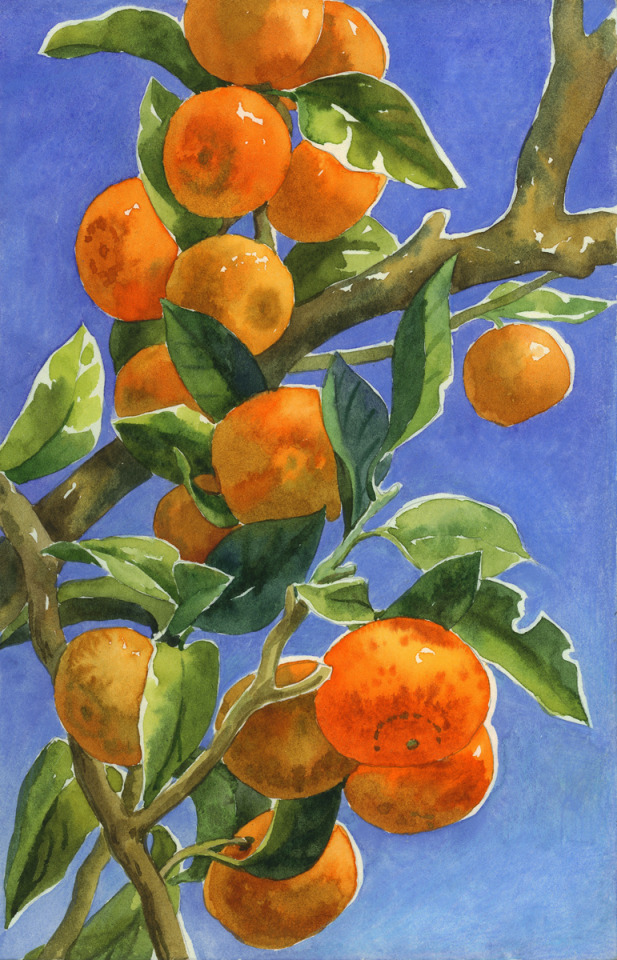
The most delicious tangerines are the ones you pick from the branch with your own hands! And how beautiful they are... ripening just before Christmas, by the end of January, they've already fallen into the winter grass, unless, of course, their assiduous owners packed them away in boxes before then.
#tangerine#mandarine#watercolour#watercolor painting#watercolour art#watercolor#watercolour illustration#artists on tumblr#Batumi#sakartvelo#Georgia#art#my art
148 notes
·
View notes
Text

Tbilisi, Sakartvelo | 07.03.2023
706 notes
·
View notes
Text

From the protests against Russian style anti foreign agent law in front of Georgian parliament. March 9, 2023.
#abkhazia#georgia#ukraine#sakartvelo#russia is a terrorist state#russian imperialism#slava ukraini#tbilisi
575 notes
·
View notes
Text

416 notes
·
View notes
Text
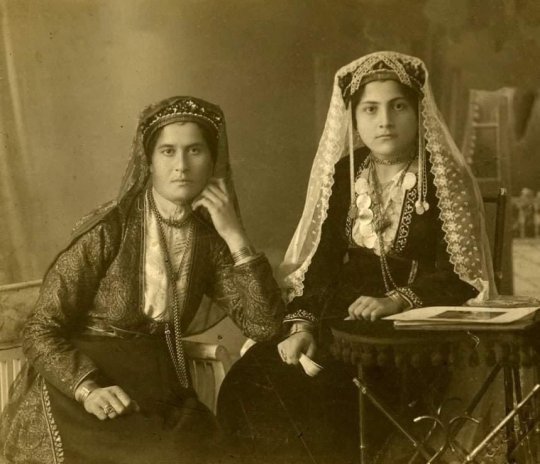
Armenian women from Akhaltsikhe, Georgia, early 20th century.
152 notes
·
View notes
Text

Kakheti, Georgia - September 2023
#sunset#clouds#nature#storm#weather#glow#aesthetic#original#photography#life#photographers on tumblr#georgia#sakartvelo#mood#travel#trip
3K notes
·
View notes
Text

Ilia Darchiashvili
#suitdaddy#suiteddaddy#suit and tie#men in suits#suited daddy#suited grandpa#suitedman#suit daddy#daddy#silverfox#suitfetish#buisness suit#suited men#suited man#suitedmen#Georgian man#Georgian men#Ilia Darchiashvili#ილია დარჩიაშვილი#Sakartvelo
23 notes
·
View notes
Text
Medieval Hermitage atop Katskhi Pillar, in Georgia (South Caucasus), c. 800-900 CE: this church was built during the Middle Ages; it sits atop a limestone column that has been venerated as a "Pillar of Life" for thousands of years
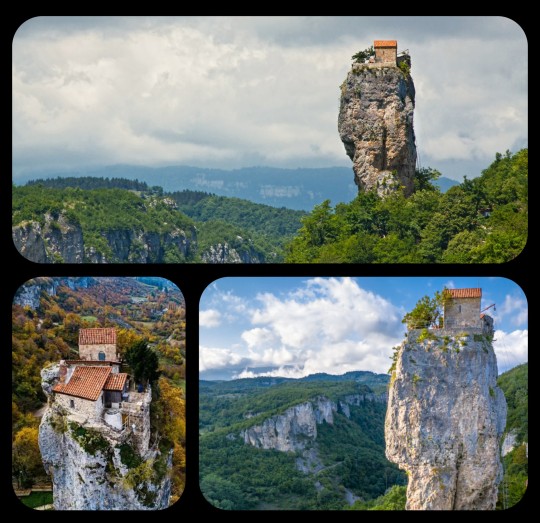
Known as Katskhi Pillar (or Katskhis Sveti), this enormous block of limestone is located in western Georgia, about 10km from the town of Chiatura.
The church that stands atop Katskhi Pillar was originally constructed during the 9th-10th century CE. It was long used as a hermitage for Stylites, who are sometimes referred to as "Pillar Saints" -- Christian ascetics who lived, prayed, and fasted atop pillars, often in total isolation, in an effort to bring themselves closer to God. This tradition originated in Syria during the 5th century CE, when a hermit known as Simeon the Elder purportedly climbed up onto a pillar and then stayed there for nearly 40 years, giving rise (no pun intended) to the Stylites. Stylitism managed to survive for about 1,000 years after its inception, but it gradually began to die out during the late Middle Ages, and by the end of the 16th century, it had essentially gone extinct.
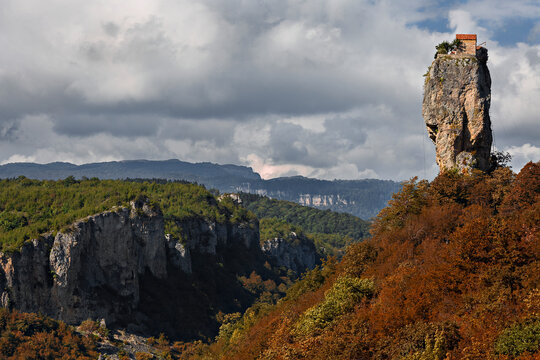
Researchers don't really know how the monks originally gained access to the top of Katskhi Pillar, or how they were able to transport their building materials up to the top of the column. There's evidence that the Stylites were still living at Katskhi Pillar up until the 15th century, but the site was then abandoned shortly thereafter. This was the same period in which Georgia came under Ottoman rule, though it's unclear whether or not that may have played a role in the abandonment of the site.
The hermitage continued to lay abandoned for nearly 500 years after that. No one had been able to gain access to the top of the pillar, and very little was even known about the ruins that lay scattered at the top, as knowledge about the site's origin/history was gradually lost. There are many local legends that emerged as a way to fill in those blanks.
The site was not visited again until July 29th, 1944, when a mountaineer finally ascended to the top of the column with a small team of researchers, and the group performed the first archaeological survey of the ruins. They found that the structure included three hermit cells, a chapel, a wine cellar, and a small crypt; within the crypt lay a single set of human remains, likely belonging to one of the monks who had inhabited the site during the Middle Ages.
A metal ladder (the "stairway to Heaven") was ultimately installed into the side of the pillar, making it much easier for both researchers and tourists to gain access to these ruins.

The hermitage at the top of Katskhi Pillar actually became active again in the early 1990's, when a small group of monks attempted to revive the Stylite tradition. A Georgian Orthodox monk named Maxime Qavtaradze then lived alone at the top of Katskhi Pillar for almost 20 years, beginning in 1995 and ending with his death in 2014. He is now buried at the base of the pillar.
While the hermitage is no longer accessible to the public, and it is currently uninhabited, it's still visited by local monks, who regularly climb up to the church in order to pray. There is also an active monastery complex at the base of the pillar, where a temple known as the Church of the Simeon Stylites is located.

The Church of the Simeon Stylites: this church is located within an active monastery complex that has been built at the base of the pillar; several frescoes and religious icons decorate the walls of the church, and a small shrine containing a 6th century cross is located in the center
There are many lingering questions about the history of Katskhi Pillar, particularly during the pre-Christian era. There is at least some evidence suggesting that it was once the site of votive offerings to pagan deities, as a series of pre-Christian idols have been found buried in the areas that surround the pillar; according to local tradition, the pillar itself was once venerated by the pagan societies that inhabited the area, but it's difficult to determine the extent to which these claims may simply be part of the mythos that surrounds Katskhi Pillar, particularly given its mysterious reputation.
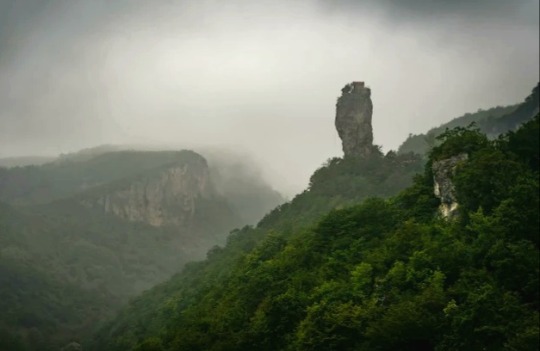
Sources & More Info:
BBC: Georgia's Daring, Death-Defying Pilgrimage
CNN: Katskhi Pillar, the Extraordinary Church where Daring Monks Climb Closer to God
Radio Free Europe: Georgian Monk Renews Tradition, Lives Atop Pillar
Architecture and Asceticism (Ch. 4): Stylitism as a Cultural Trend Between Syria and Georgia
Research Publication from the Georgian National Museum: Katskhi Pillar
Journal of Nomads: Katskhi Pillar, the Most Incredible Cliff Church in the World
Georgian Journal: Georgia's Katskhi Pillar Among World's 20 Wonderfully Serene and Secluded Places
#archaeology#history#anthropology#artifact#medieval architecture#medieval church#Stylites#asceticism#georgia#sakartvelo#katskhi pillar#religion#travel#monastery#paganism#caucasus#medieval europe#christianity#strange places
446 notes
·
View notes
Text

Small waterfall near the Sarpi on the border between Georgia and Turkey.
(It's been spring here for a long time)
#art#my art#watercolour#watercolor painting#watercolor#watercolour art#nature#spring#springtime#water#sakartvelo#Georia#rocks#artists on tumblr
34 notes
·
View notes
Text

Obsessed w this lad at the protest against the 'Russian anti-agent law' today in Tbilisi.
Sign reads "People are going to Mars. Why would I want to go to Moscow?!🤡"
255 notes
·
View notes
Text
For anyone mourning Gorbachev - thanks for showing how your West-centric views always allowed to completely ignore crimes committed against Eastern European and Central Asian nations. Also thanks for proving that it is indeed that ignorance, naivete, or perhaps even stupidity caused current Ukrainian war in the first place.
Because while Gorbachev personally ordered to murder peaceful protesters, some of whom were not even adults yet, you awarded him with a Nobel peace prize for Berlin wall that he considered "a mistake".
He personally ordered to run over with tanks and shoot at peaceful civilians in Vilnius, Tbilisy, Baku, and others.
So while you mourn his rotten, crimes against humanity committing body, we, people who had to spill blood for our independence because Gorby couldn't let go of his imperialism, going to celebrate today.
And the biggest cause for celebration in Lithuania is the fact that our first post-USSR leader, a man who tried to reach out to Gorbachev while his soldiers killed innocent protesters, outlived him. And I hope in his last moments Gorby thought of it.
Freedom won!
592 notes
·
View notes